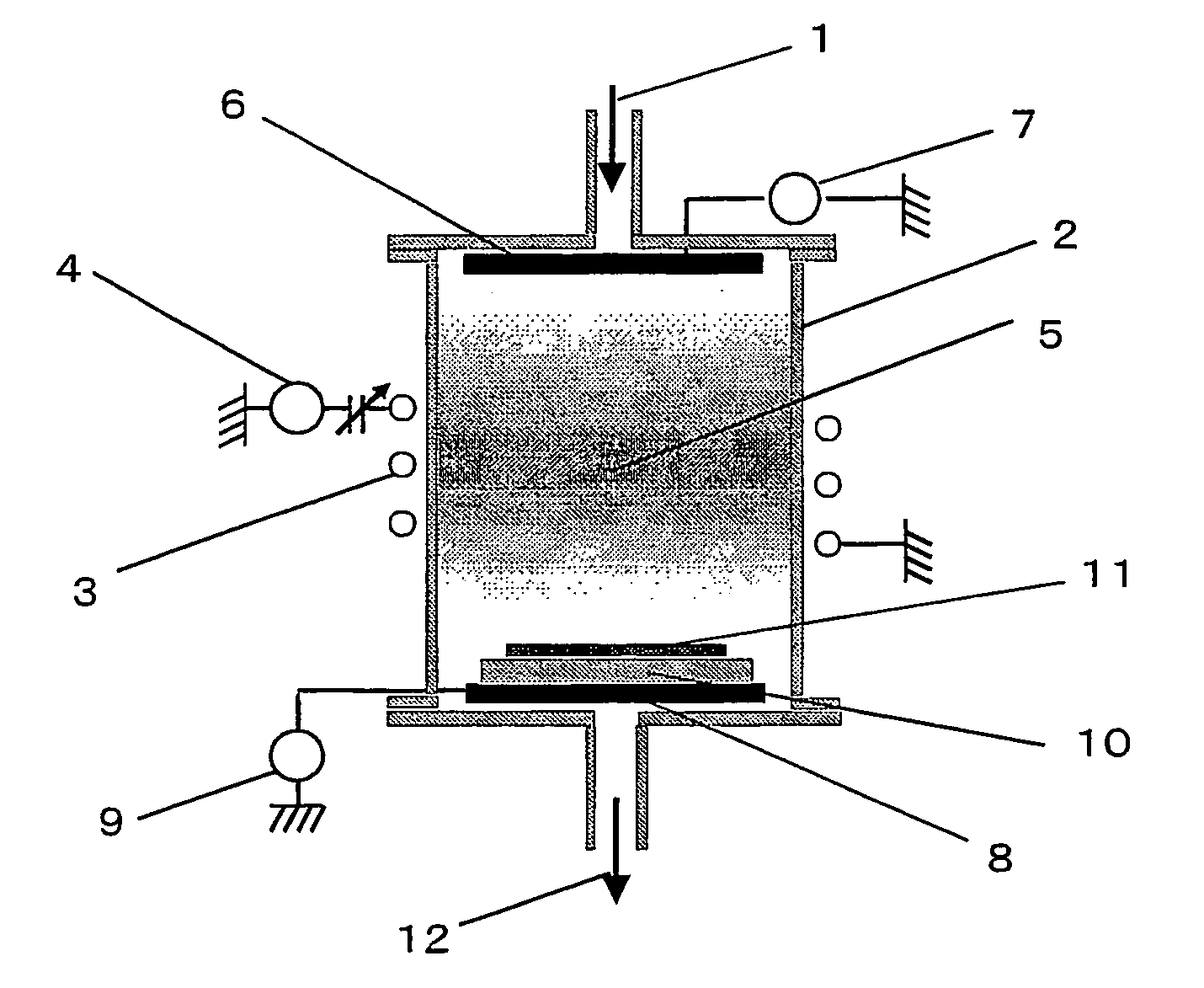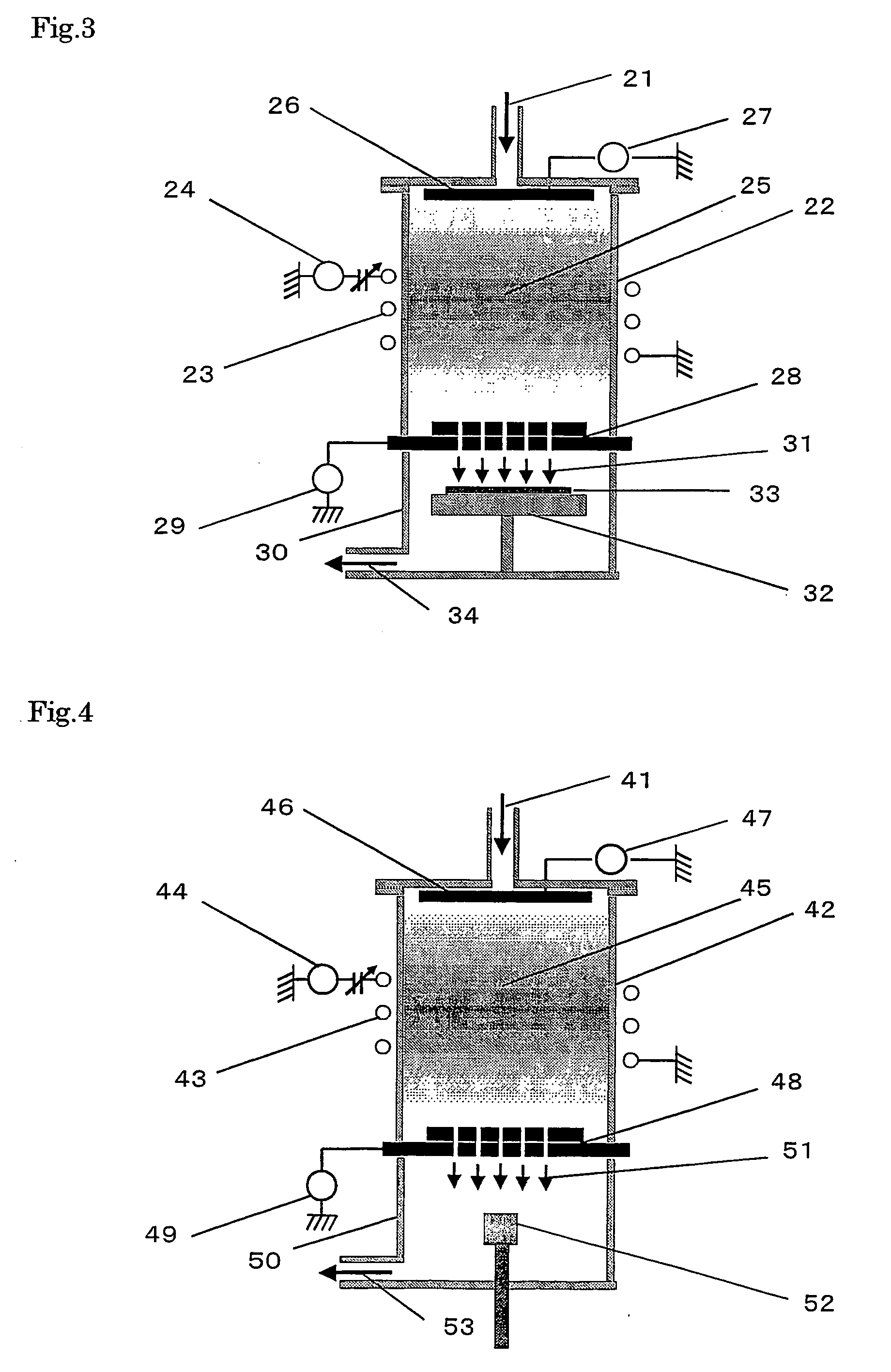Plasma Treatment Method and Plasma Etching Method
a plasma treatment and plasma technology, applied in the field of plasma treatment process, can solve the problems of damage to devices caused by plasma process, physical and chemical influence, etc., and achieve the effect of fine processing and high accuracy
- Summary
- Abstract
- Description
- Claims
- Application Information
AI Technical Summary
Benefits of technology
Problems solved by technology
Method used
Image
Examples
example 1
[0365] Using a plasma and neutral beam analysis apparatus as shown in FIG. 4, a continuous plasma, pulse-time-modulated plasma and neutral beam were generated from fluorine gas (F2) and then the generated continuous plasma, pulse-time-modulated plasma and neutral beam were analyzed using QMS (quadrupole mass spectrometer), a microwave interferometer, an emission spectrometer, a Faraday cup and a calorimeter.
[0366] At first, the structure of the plasma and neutral beam analysis apparatus as shown in FIG. 4 is described below. In the plasma and neutral beam analysis apparatus as shown in FIG. 4, a quartz made plasma generating chamber 42 has the same structure as the quartz made plasma generating and substrate treatment chamber 2 in the pulse-time-modulated plasma generating apparatus as shown in FIG. 1. The plasma generating chamber 42 is provided with a port for feeding a treatment gas 41, and an antenna 43 for generating inductively coupled plasma is rolled up in a coil-like state...
example 2
[0393] Plasma etching for a substrate was carried out by a pulse-time-modulated plasma of fluorine gas (F2), the etching rate of silicon (Si) was measured and the etching form was observed.
[0394] Using a pulse-time-modulated plasma generating apparatus as shown in FIG. 2, 30 mL / min of the 100% by volume fluorine gas (F2) same as one used in Example 1 was introduced as a treatment gas 61 into a plasma generating and substrate treatment chamber 62, and RF bias (1 kW) having a discharge frequency of 13.56 MHz was applied from a high frequency electric source 64 to an antenna 63 to generate a continuous plasma 65.
[0395] To a carbon made electrode for accelerating ion 68, RF bias of 1 MHz was applied with an output of 50 W from an electric source for applying voltage 69. By applying the RF bias to the carbon made electrode for accelerating ion 68 in this manner, positive and negative ions generated in the plasma 65 were accelerated in the direction almost vertical to a substrate holdin...
example 3
[0399] From pulse-time-modulated plasma of fluorine gas (F2), negative ions were selectively extracted and neutralized to generate a neutral beam. By the neutral beam, plasma etching of a substrate was carried out. In order to examine the composition of the neutral beam, etching rates of polysilicon (Poly-Si) and SiO2 were measured using electrodes of extracting beams having a different F radical-adhering coefficient, and further the etching form of Poly-Si was observed.
[0400] Using the neutral beam generating apparatus as shown in FIG. 3, 30 mL / min of the 100% by volume fluorine gas (F2) same as that used in Example 1 was introduced as a treatment gas 21 to a plasma generating chamber 22, and RF bias of 1 kW having a discharge frequency of 13.56 MHz (during the ON time) was applied in a pulse state from a high frequency electric source 24 to an antenna 23, to generate pulse-time-modulated plasma. In this procedure, the ON time / OFF time in the pulse-time-modulation were 50 μsec / 50 ...
PUM
 Login to View More
Login to View More Abstract
Description
Claims
Application Information
 Login to View More
Login to View More - R&D
- Intellectual Property
- Life Sciences
- Materials
- Tech Scout
- Unparalleled Data Quality
- Higher Quality Content
- 60% Fewer Hallucinations
Browse by: Latest US Patents, China's latest patents, Technical Efficacy Thesaurus, Application Domain, Technology Topic, Popular Technical Reports.
© 2025 PatSnap. All rights reserved.Legal|Privacy policy|Modern Slavery Act Transparency Statement|Sitemap|About US| Contact US: help@patsnap.com



